9 Essential Products for Medication Management in Long-term Care Homes
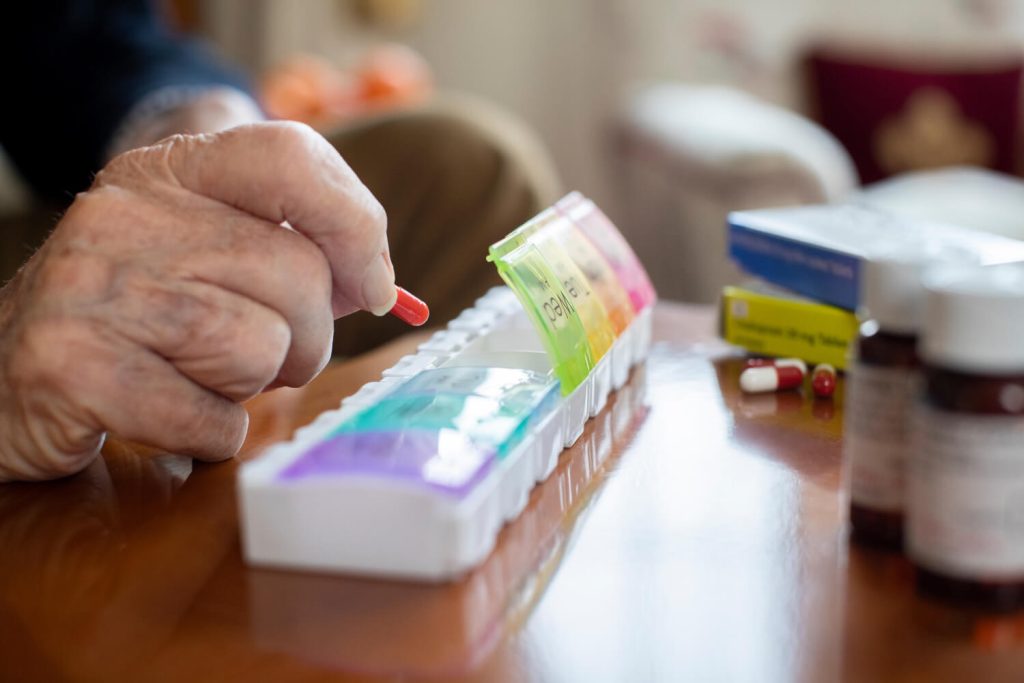
Effective medication management is crucial in long-term care homes to ensure the well-being of residents. With many residents taking multiple medications, the process must be organized, accurate, and safe. To facilitate this, long-term care facilities rely on a range of essential products specifically designed for medication management. We’ve put together a list of 9 essential products to simplify medication management: 1. Medication Carts Medication carts are mobile storage units equipped with drawers and compartments designed to store and organize medications securely. These carts are essential for medication distribution as they allow healthcare providers to bring the medications directly to residents’ rooms, ensuring timely administration and reducing the risk of errors. 2. Medication Administration Records (MARs) MARs are crucial documents that track each resident’s medication regimen. These records detail the name of the medication, dosage, frequency, and the healthcare provider responsible for administering it. MARs provide a clear overview of each resident’s medication schedule, helping prevent missed doses and medication errors. 3. Medication Cups and Dispensers Medication cups and dispensers are designed to measure and distribute precise doses of liquid medications. They often have easy-to-read volume markings, making it easier for healthcare providers to ensure accuracy in administering liquid medications. 4. Pill Organizers and Medication Trays Pill organizers and medication trays are indispensable for managing oral medications. These products are divided into compartments for each medication dose, often organized by day and time. Residents’ medications can be pre-filled into these organizers, streamlining the medication administration process and reducing the risk of confusion. 5. Medication Crushers and Splitters For residents who have difficulty swallowing whole pills, medication crushers and splitters are essential tools. Crushers help transform solid pills into a powdered form that can be mixed with food or liquid, while splitters accurately divide pills into smaller doses. 6. Medication Administration Devices Medication administration devices, such as insulin pens or inhalers, are essential for residents with specific medical conditions that require specialized medication delivery methods. These devices should be easily accessible and properly maintained to ensure residents receive their medications as prescribed. 7. Barcode Scanners and Medication Verification Systems Barcode scanners and medication verification systems are technology-driven tools that enhance medication safety. By scanning barcodes on medication packaging and residents’ identification, healthcare providers can verify that the right medication is administered to the right resident at the right time, significantly reducing the risk of errors. 8. Medication Refrigerators and Storage Units Certain medications require specific storage conditions, including temperature control. Medication refrigerators and storage units equipped with temperature monitoring systems are essential to ensure the efficacy and safety of medications that need refrigeration or controlled storage. 9. Medication Disposal Containers Proper disposal of expired or unused medications is crucial to prevent accidental ingestion or environmental contamination. Medication disposal containers provide a safe and secure way to dispose of medications, ensuring they are not accessible to unauthorized individuals. Effective medication management is a top priority in long-term care homes to maintain residents’ health and well-being. The products above not only streamline the workflow of healthcare providers but also play a crucial role in preventing medication errors and ensuring residents receive the care they need.
10 Best Practices for Managing Medications in Retirement Homes

Medication management is important for everyone. But when you run a care facility like a retirement home, it plays an essential role. Everyone from the management to staff members need to be on the same page. Managing medications in retirement homes is essential to ensure the well-being and safety of the residents. So, it goes without saying that retirement homes must periodize it. Here are 10 best practices for effectively managing medications in retirement home environments: Comprehensive Medication Management Practices Maintain accurate records of each resident’s medications, including dosage, frequency, and any special instructions. Designate a designated staff member, such as a nurse or pharmacist, to oversee medication administration and management. Maintain Strict Medication Safety Protocols Implement strict safety protocols to prevent medication errors. Use barcoding or electronic medication administration records (eMAR) systems to verify doses and reduce the risk of mistakes. Regularly review and update medication lists, ensuring that they’re consistent with the physician’s orders. Focus on Staff Training and Education Provide thorough training to staff members responsible for medication administration. Ensure staff are knowledgeable about each medication’s purpose, potential side effects, and interactions to address residents’ concerns and provide accurate information. Provide Personalized Medication Plans Develop individualized medication plans for each resident based on their medical conditions, allergies, and preferences. Regularly review and update these plans with input from medical professionals to reflect any changes in the resident’s health status. Have Detailed Medication Administration Procedures Administer medications on schedule and according to the prescribed dosage. Use proper techniques for medication administration, such as administering with or without food, crushing tablets if necessary, or following other specific instructions. Ensure proper disposal of expired or unused medications. Have a Process for Monitoring and Documentation Regularly monitor residents for any adverse reactions or side effects from medications. Document all medication administrations, including date, time, dosage, and the staff member responsible. Have Strong Family and Resident Communication Keep residents and their families informed about the medications being administered and any changes in the medication plan. Address residents’ questions or concerns about their medications in a timely and compassionate manner. Ensure Safe Medication Storage and Security Store medications securely in a designated area that is locked and accessible only to authorized personnel. Separate residents’ medications to prevent mix-ups and ensure accurate administration. Leverage Pharmacist Consultation Collaborate with pharmacists to review medication regimens and ensure proper dosages and interactions. Leverage the expertise of pharmacists to provide guidance on medication management. Conduct Regular Medication Reviews Conduct regular medication reviews to assess the ongoing need for each medication and identify potential alternatives or adjustments. Involve the resident’s healthcare provider in the review process. By following these best practices, retirement homes can help ensure the safety, well-being, and proper management of medications for their residents, promoting a higher quality of life and peace of mind for both residents and their families.
8 Ways to Improve the Quality of Life for Seniors in Long-Term Care
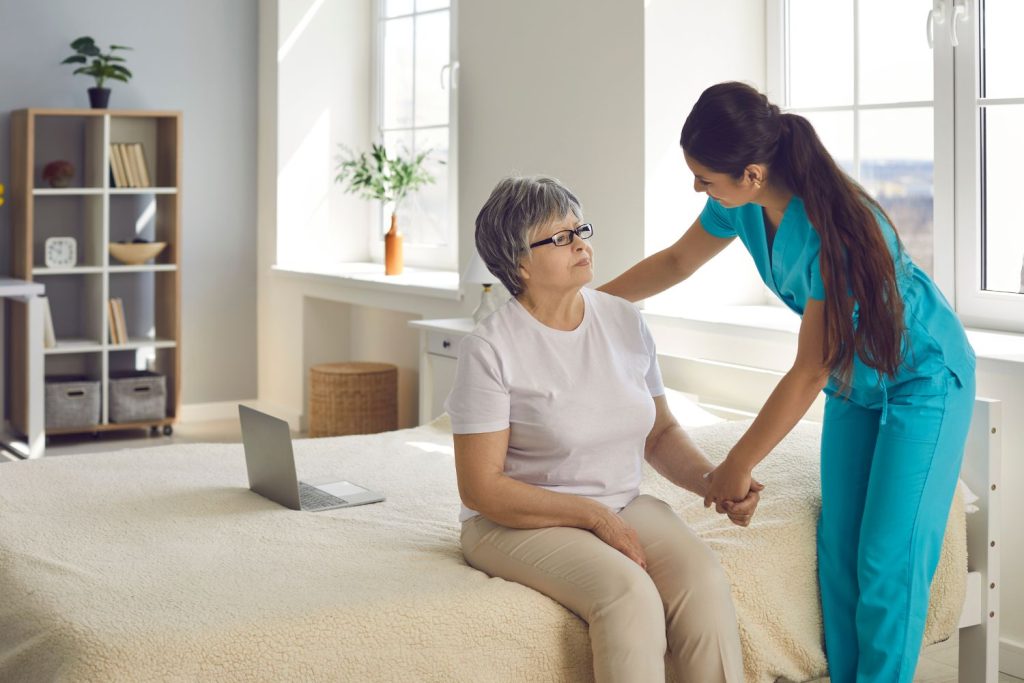
Having a good quality of life is important no matter where you live. As a senior, you want to live somewhere you can thrive. As a long-term care provider, this is the goal and it’s essential for you to create an environment where seniors can be comfortable. Below, we outline 8 ways to improve the qualify of life for seniors in long-term care facilities: Person-Centered Care Adopt a person-centred approach to caregiving, where the individual’s preferences, needs, and interests are at the core of care planning. Involve seniors in decision-making and respect their autonomy, allowing them to maintain a sense of control over their lives. This is the basis for all care going forward. Enhance Social Interaction There are many ways for your facility to provide social interaction opportunities among residents and others. Promote socialization and engagement among seniors by organizing group activities, outings, and events. Encourage friendships and connections with peers to combat feelings of isolation and loneliness. Individualized Activities Everyone is different, so offer a variety of activities. Provide a diverse range of activities tailored to each senior’s abilities and interests. Offer opportunities for physical exercise, cognitive stimulation, arts and crafts, music, and reminiscence therapy to keep seniors engaged and mentally active. Staff Training You need staff buy-in to improve the quality of life within your long-term care facility. Invest in continuous training for staff to ensure they are equipped with the knowledge and skills needed to provide compassionate and competent care. Training should focus on understanding the unique needs of seniors, including those with dementia or other medical conditions. Comfortable and Home-Like Environment Create a welcoming and home-like atmosphere within the long-term care facility. Personalize living spaces with familiar belongings and decorations to foster a sense of familiarity and comfort. Do what you can to make your facility as welcoming as possible. Nutritious and Varied Meals Everyone loves a good meal. Provide well-balanced, nutritious meals that cater to individual dietary needs and preferences. Encourage communal dining experiences to foster social interaction during mealtimes. Regular Family Involvement Encourage regular communication and involvement with family members. Family visits and engagement can have a positive impact on seniors’ emotional well-being and provide additional support and advocacy for their needs. Pet Therapy and Intergenerational Programs Introduce pet therapy sessions and intergenerational programs where seniors can interact with animals or younger generations, respectively. These interactions can bring joy, reduce stress, and create meaningful connections. By implementing these strategies, long-term care facilities can significantly improve the quality of life for seniors. Treating seniors with dignity, respect, and empathy, while fostering a supportive and engaging environment, ensures that they experience the highest level of well-being and happiness during their stay. If you follow the above tips, you be able to provide seniors with an atmosphere where they can have a good quality of life.
6 Tips for Communicating with Residents and Caregivers in Retirement Homes
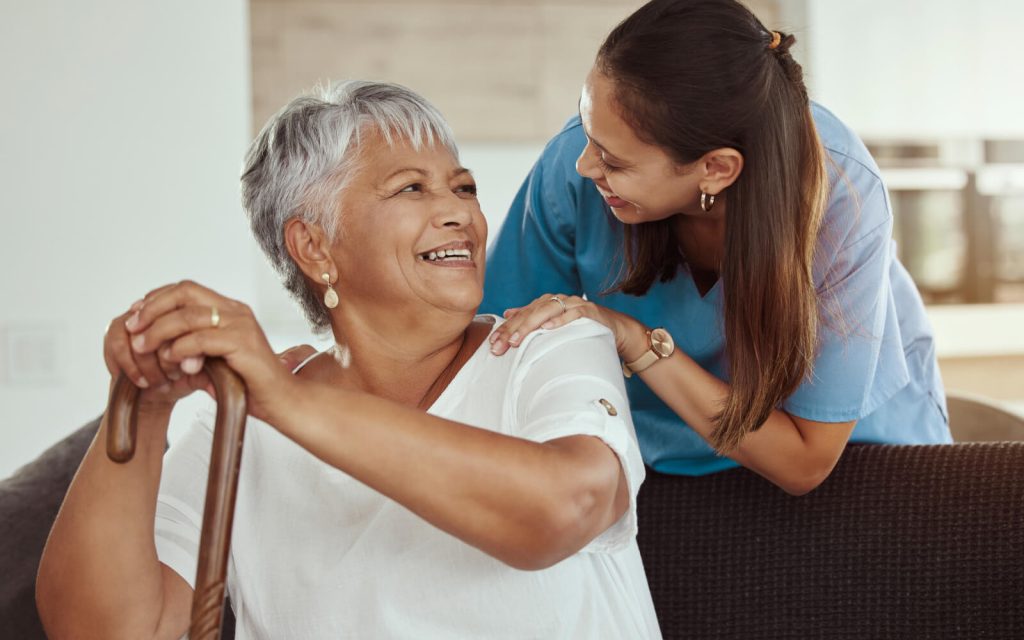
Effective communication is crucial in retirement homes to ensure that residents and caregivers have a clear understanding of each other’s needs and expectations. Here are six valuable tips for fostering positive and efficient communication in retirement homes: Focus on Active Listening and have Empathy Active listening is a key skill in effective communication. Take the time to truly listen to residents and caregivers, allowing them to express their thoughts, concerns, and needs. Show empathy by acknowledging their emotions and validating their experiences. This can help build trust and create a supportive environment. Maintain eye contact, use open body language, and avoid interrupting when residents or caregivers are speaking. Paraphrase and summarize their comments to ensure you understand their message accurately. Respond with compassion and kindness, considering their perspective and feelings. Use Clear and Respectful Language Using clear and respectful language is essential for effective communication in retirement homes. Keep in mind that some residents may have hearing or cognitive impairments, so it’s important to speak slowly and clearly, using simple and concise sentences. Avoid using jargon or complex medical terminology unless necessary, and always check if residents or caregivers understand the information provided. Respect their privacy and dignity by asking permission before discussing personal matters and ensuring confidentiality. Use Visual Aids and Written Communication to Greater Understanding Visual aids and written communication can enhance understanding and provide reference material for residents and caregivers. Use visual aids, such as charts, diagrams, or pictures, to explain procedures, schedules, or health-related information. This can be particularly helpful for residents with visual impairments or memory difficulties. Provide written materials, such as brochures, newsletters, or handouts, that contain important information about facility policies, upcoming events, or health tips. Use clear and legible fonts and consider using larger print for easier reading. Hold Regular Family Meetings and Provide Updates Organize regular family meetings to keep caregivers informed about their loved one’s well-being, care plans, and any changes in the facility. These meetings provide an opportunity for open dialogue, addressing concerns, and updating caregivers on the resident’s progress. Send regular updates to caregivers, whether through email, newsletters, or a dedicated online portal. These updates can include information about activities, health updates, and reminders. Open channels of communication with caregivers can strengthen trust and collaboration. Account For Multilingual and Cultural Sensitivity In retirement homes with residents from diverse backgrounds, multilingual and culturally sensitive communication is crucial. Hire staff members who can speak multiple languages or provide interpretation services to facilitate effective communication with residents and caregivers who may have limited English proficiency. Be mindful of cultural differences and customs. Respect individual preferences and incorporate cultural practices into the care provided, whenever appropriate and feasible. This promotes inclusivity, understanding, and mutual respect among residents, caregivers, and staff. Have A Channel for Feedback and a Complaint Resolution Process Create a supportive environment where residents and caregivers feel comfortable providing feedback and expressing concerns. Establish a clear process for addressing complaints and resolving conflicts promptly and fairly. Actively seek feedback through surveys, suggestion boxes, or informal discussions to identify areas for improvement and make necessary adjustments. Respond to feedback in a timely and respectful manner, addressing concerns and providing explanations when necessary. Communicate any changes or improvements resulting from the feedback to demonstrate that their input is valued and taken seriously.
8 Ways to Improve Medication Adherence in Long-Term Care Homes
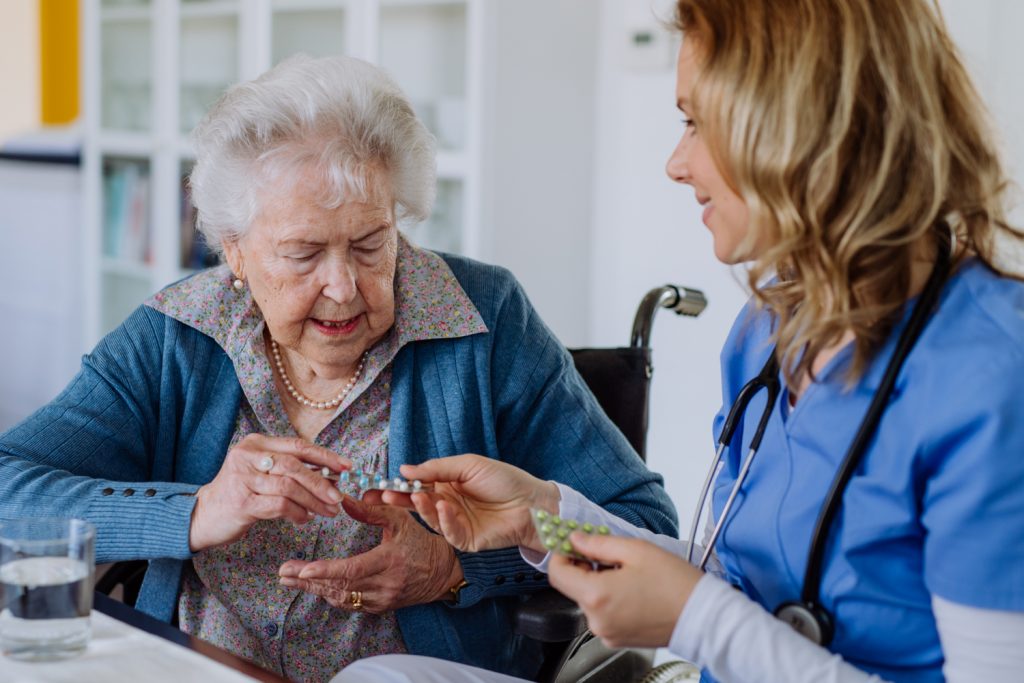
Medication adherence is crucial for residents in long-term care homes. But it can be challenging. There are a lot of variables in play. Still, residents need to take their prescribed medication on time and at the appropriate dosage to ensure they manage their medical needs. As a caregiver at a long-term care home, it’s your responsibility to ensure that your residents take their medications correctly and on time. Here are nine ways to improve medication adherence in long-term care homes: Try to Simplify Medication Schedules Complicated medication schedules can be overwhelming and confusing for residents. It can be hard to remember what pills to take when, especially if you have multiple prescriptions to take. Simplify medication schedules by organizing medications into pill boxes or blister packs. Ensure that medication schedules are easy to read and understand. Educate Everyone Involved Educate residents and their families about the importance of medication adherence. Explain the potential consequences of missed doses and the benefits of taking medications as prescribed. As they say, it takes a village. Getting everyone on the same page is important. Use A Reminder System People forget things. Reminder systems can be helpful in reminding residents to take their medications on time. Use alarms or reminder apps on smartphones or tablets to remind residents when it’s time to take their medications. They can be very effective. Use Medication Dispensing Machines Medication dispensing machines can help to ensure that residents take their medications on time. These machines dispense medications at the appropriate times and provide reminders to residents when it’s time to take their medications. They can also help caregivers more effectively distribute medication as needed. Monitor for Side Effects This is very important. Monitor residents for side effects of medications. If a resident experiences side effects, it’s important to report them to the physician and adjust the medication as necessary. Do this ongoing because you never know when someone could have an adverse effect. Consider Using Medication Therapy Management (MTM) Medication Therapy Management (MTM) is a comprehensive approach to medication management that can improve medication adherence. MTM involves a pharmacist reviewing a resident’s medications and working with the physician to optimize medication therapy. Check with your partnering pharmacy about your options. Use Medication Aids Everyone is different. For example, some have challenges swallowing pills. Medication aids, such as pill cutters and crushers, can make it easier for residents to take their medications. Ensure that medication aids are safe to use and that residents are trained on how to use them properly. Address Barriers to Adherence There are barriers that can get in the way of people taking their medication properly. Identify and address barriers to medication adherence, such as cost, transportation, and language barriers. Work with residents and their families to develop solutions to these barriers. improving medication adherence in long-term care homes requires a multifaceted approach. By implementing these strategies, you can help to ensure that your residents receive the medications they need to maintain their health and well-being.
6 Tips for Providing Medication Education to Seniors

Being properly educated about medication is essential for all people. But it’s even more important for seniors, who may be taking multiple medications at the same time. Providing medication education to seniors can be a challenging task. Some older adults may have difficulty understanding or remembering important information about their medications. With the right approach, you can help seniors feel more confident and empowered when it comes to managing their medications. Here are some effective tips for providing medication education to seniors: Use plain language Keep things as simple as possible. When explaining medication information to seniors, it’s important to use plain language that is easy to understand. Avoid medical jargon and technical terms. Use simple, everyday language to describe medication dosages, side effects, and other important details. Focus on the benefits Some people may be reluctant to take certain medications. So, rather than emphasizing the potential risks or side effects, focus on the benefits that they can provide. For example, explain how medication can help to reduce pain or improve mobility, and how this can improve overall quality of life. Many medications are most effective when taken consistently and as directed. Emphasize the importance of taking medications as prescribed and explain how missed doses or inconsistent use can affect treatment outcomes. Demonstrate how to take medication It may not be immediately obvious how to take certain medications. Show seniors how to properly use their medications. This can include how to read the label, measure the dosage, and store the medication safely. Consider providing a hands-on demonstration to help seniors feel more confident about their ability to manage their medications. You could also use visual aids. They can be especially helpful for seniors who have difficulty reading or remembering information. Consider using diagrams or pictures to illustrate important concepts. For example, how to properly use an inhaler or apply topical medication. Write out the steps for reference In addition to verbal instructions, provide seniors with written materials that they can refer to later. This might include medication information sheets, medication logs, or a list of frequently asked questions about their medications. Having a sheet to reference can give senior something to reference if they forgot something or have a questions about their medication. Address concerns about potential side effects This is always a main topic of discussion about medication. Many seniors may be hesitant to take medications due to concerns about potential side effects. Take the time to address these concerns and explain how side effects can be managed or minimized. It’s also important to encourage seniors to report any side effects to their healthcare provider so that they can be addressed promptly. Discuss potential issues if taking multiple medications Many seniors take multiple medications, vitamins, and supplements. It’s important to discuss the potential for drug interactions. Be sure to review all the medications that the senior is taking, including over-the-counter medications and supplements, and explain any potential interactions or side effects. Senior care pharmacies are one of the many resources you can use to ensure you are getting the proper care and medication you need. This includes education about your medication. Reach out if you have questions about your medications.
8 Essential Services Offered by a Senior Care Pharmacy

Choosing the right pharmacy can make a significant difference in the level of service and consultation a person receives. While there are many pharmacies out there, they are not all the same. In fact, they can be very different. As you get older and place more focus on your health and well-being, pharmacies become more important. So, why not choose one that caters specifically to seniors? Top services offered by senior care pharmacies A senior care pharmacy specializes in geriatric care. They provide care specifically tailored to the needs of seniors, including specialized care for conditions such as dementia, Parkinson’s disease and other ailments that are common among seniors. It makes sense to use a pharmacy that is the most capable of helping you with all your pharmaceutical requirements. Here are 8 essential services offered by a senior care pharmacy: Medication management Senior care pharmacies help manage medication regimens, ensuring that seniors are taking the right medications at the right time. They can synchronize refill dates to help seniors avoid running out of their medications. Pharmacies can also offer specialty packaging. They can provide medication packaging options such as blister packs or pillboxes to help seniors stay organized and adhere to their medication regimen. Another thing they can offer is medication therapy management: They can provide medication therapy management services to help seniors achieve optimal health outcomes. Home delivery Pharmacies can deliver medications directly to the homes of seniors. This is a particularly important service for seniors with mobility issues or those who no longer have transportation. Medicine consultations Receive consultations for seniors and their caregivers to discuss medication regimens, side effects, and other concerns. This can help ensure everyone is on the same page and proper steps are being taken. Medical equipment Seniors often require additional equipment. Pharmacies can provide medical equipment such as wheelchairs, canes, and walkers. Vaccinations Staying up to date on recommended and required vaccinations is important for seniors. Pharmacies can provide vaccinations such as flu shots to help seniors stay healthy. Specialty medications Get access to specialty medications for seniors with complex health conditions. This includes things like compounding, where pharmacists can create customized medications to meet the specific needs of seniors. Medication reviews Your medication needs can change over time. Pharmacists can conduct medication reviews to ensure that seniors are taking the most appropriate medications. They can also create adherence programs to help seniors stay on track with their medication regimens. Additionally, they can provide education on medication use and side effects, as well as other health-related topics. Coordination with healthcare providers Finally, senior care pharmacies can work closely with healthcare providers to ensure that seniors receive the best possible care. This includes working with your doctor and other medical professionals. As a senior, it’s a must to take steps to maximize your health. Senior care pharmacies are one of the many resources you can use to ensure you are getting the proper care and medication you need.
Bathroom Safety Equipment for Senior Homes: 5 Must-Haves
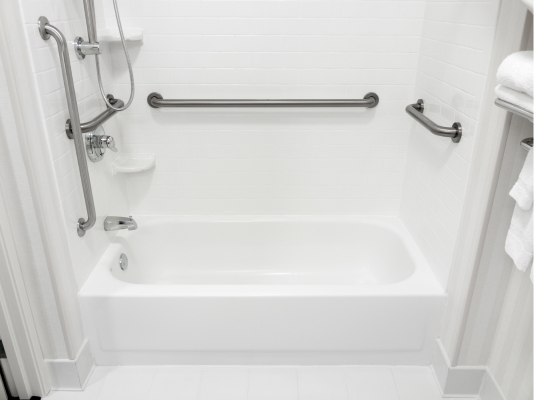
Safety and accessibility are especially important considerations for senior homes. One of the most used and potentially dangerous rooms in any location is the bathroom. It’s a prime location for slips and falls. In fact, according to the Canadian Institute for Health Information, “data shows that 4 out of 5 injury hospitalizations involving seniors were due to falls. Over the past 3 years, injury hospitalizations among seniors due to falls increased by 9%, or about 8,900 people, the largest increase among hospitalizations for seniors.” A sizable portion of these falls happens in the bathroom. Therefore, it’s essential to outfit seniors’ homes with the proper bathroom safety equipment to reduce the chances of a fall event occurring. Here are 5 must-have items that will improve bathroom safety in senior home bathrooms: 1. Grab bars Grab bars are one of the smallest yet most important of all bathroom safety equipment. They can be installed wherever needed through the bathroom. They help with mobility, and transitions and are an important thing to have just in case you need it. They come in a number of sizes and varieties, making them versatile. 2. Shower chairs and benches The tub and shower are one of the most common locations for falls. Installing shower chairs and benches provide seniors with added support when they need it. They are ideal for individuals who cannot stand for an extended period of time. They are good support for seniors who need to sit and rest, and they can also help to prevent falls if you lose your balance or slip. 3. Shower mats Speaking of slipping, we all know how slick and slippery a tub or shower can be when it’s wet. Add in soap and someone who is not great on their feet, and it’s no wonder so many falls happen. Shower mats can help make bathtub surfaces safer and more secure with the added grip it provides. These can be installed in any shower space quickly and easily. 4. Raised toilet seat Transitions are a common issue for seniors. Getting up and down out of a chair, bed, and even the toilet are common times when they have a fall. Installing a raised toilet seat can help to make transitions from and to the toilet easier. This is particularly important for people who use a wheelchair, walker, cane, or another mobility device. A shorter distance makes it easier to maneuver and pivot on and off. 5. Bath lift A bath lift is an essential piece of equipment for people who can no longer walk or stand without assistance. It provides caregivers with the additional support they need to ensure seniors can get in and out of the bath safely. Lifts are available in a variety of options and have many unique features. Adding these pieces of bathroom safety equipment to senior homes creates a safer and more comfortable environment for patrons and caregivers.
Transitional Care vs. Independent Living – What’s the Difference?
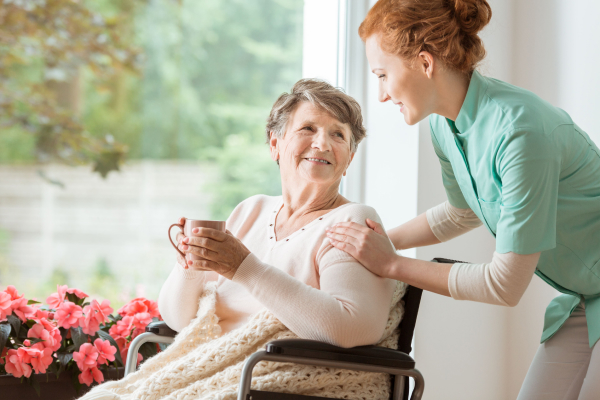
There are many diverse types of healthcare facilities in Canada. Some are short-term while others are for long-term care. But it can be somewhat confusing what you can expect from different facilities. While there will be some overlap in the type of care offered, there are also stark differences. Two of the most common are transitional care facilities and independent living facilities. Below we talk about the differences between these two types of care facilities: What Is Transitional Care? Transitional care is exactly as it sounds. They are facilities that are intended for patients to stay for a shorter period of time. They provide patients support before they move back to their homes or a community living centre. Usually, people go to transitional care facilities once they no longer require acute care at the hospital but are not quite ready to return home. Generally, they need some additional assistance or rehabilitation before they are ready to live independently. Some of the reasons people may enter transitional care include: Most people stay in transitional care for a shorter period of time. This can be anywhere from a few days to weeks or even a few months. It is not usually more than 90 days. Your length of stay will depend on your medical requirements. What Is Independent Living? Independent living communities are intended for healthy individuals, usually seniors, who do not require around-the-clock support from a nurse or caregiver. They can complete most daily tasks independently but may require some assistance from time to time. People often live in apartment complexes or condominiums. Sometimes these are referred to as retirement communities. This is a more autonomous style of living compared to an assisted living facility. These are locations where there are onsite staff, nurses, and caregivers to assist individuals with their medical needs. Residents here typically have pre-existing medical conditions and require regular assistance. Whereas independent living communities are more community-focused locations designed to help seniors socialize and improve their overall quality of life. Pharmacy Care and Services for Transitional Care and Independent Living Regardless of where you are located, your need for pharmaceutical care will remain. Whether you need to fill normal prescriptions or require more detailed and attentive medication services, you need to find a pharmacy that can help you regardless of your health and medical needs. At Silver Fox Pharmacy, we provide services for both transitional & independent living facilities. We offer customized services for all our customers to ensure you receive your prescriptions and medication in the format you need when you need it.
5 Reasons Why Transitional Care Units Could Benefit from Specialized Pharmacy Services
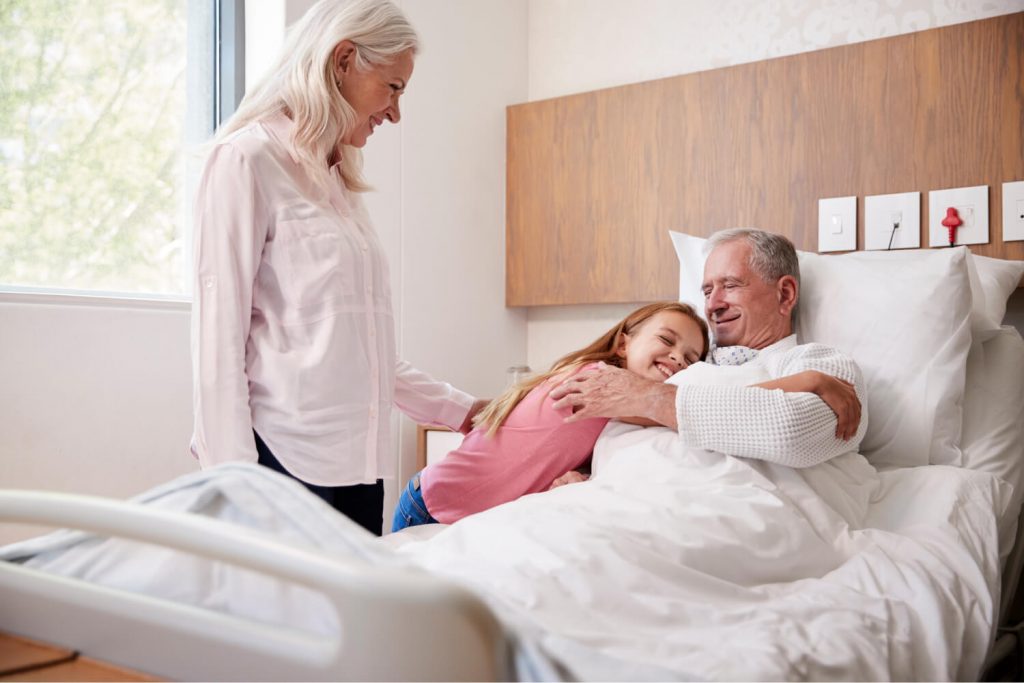
Pharmacies play a key role in the health care of individuals no matter where they are located. They offer specialized services for people at home, in hospitals, and care facilities, including transitional care units. Even though patients typically stay in these units for a short period of time, these units can benefit from partnerships with pharmacies offering specialized services. There are a lot of challenges transitional care units face, especially when dealing with patent medication. Below, we’ll outline 5 important reasons why transitional care units can benefit from specialized pharmacy services. 1. Assist in an effective transition to the care unit When patients enter transitional care units, developing an understanding of potential medical needs is a key part of their care. Pharmacies can play an active role in the process of fulfilling medication and prescription requests to ensure people receive the medication they need when they need it, and at the right dosage. Building a strong relationship with a pharmacy allows them to better serve your unit’s needs, improving the overall quality of care. 2. Reduce chances of readmittance Ineffective transitions of care are a significant expense for the healthcare industry. The quality of care a patient receives in transitional units can have an impact on their need to return in the future. Having access to specialized pharmacy services can help these units gain better access to medication requirements for patients, leading to better overall care. This can help to make transitional care more efficient and cost-effective. It can ensure people get access to the right meds, at the right dosage and when they need them. 3. Simplicity in customizing care for patients Ensuring patients receive personalized care is an essential part of their successful stay in transitional care units. Not two people have the same care requirements. When transitional units have a strong partnership with a local pharmacy, they will have greater access to the resource they need to provide better care to every individual who comes through their facility. 4. Patient safety Patient safety is of the utmost importance. Ensuring patients receive the right medication is a big part of this and pharmacies can play a big role in this. As argued by Andrea C Backes in Transitional Care Units: Expanding the Role of Pharmacists Providing Patient Care, “Pharmacist-driven medication reconciliation and review can improve medication safety across transitions of care involving TCUs.” 5. Transitioning patients back to the community Specialized services from pharmacies can help transitional care units ensure they set up patients for success as they get ready to exit care and move back into the community. Pharmacies can play a role in helping to educate patients about the medication they require at home. They can also help supply people with assistive devices and other healthcare resources to continue to recover at home.




